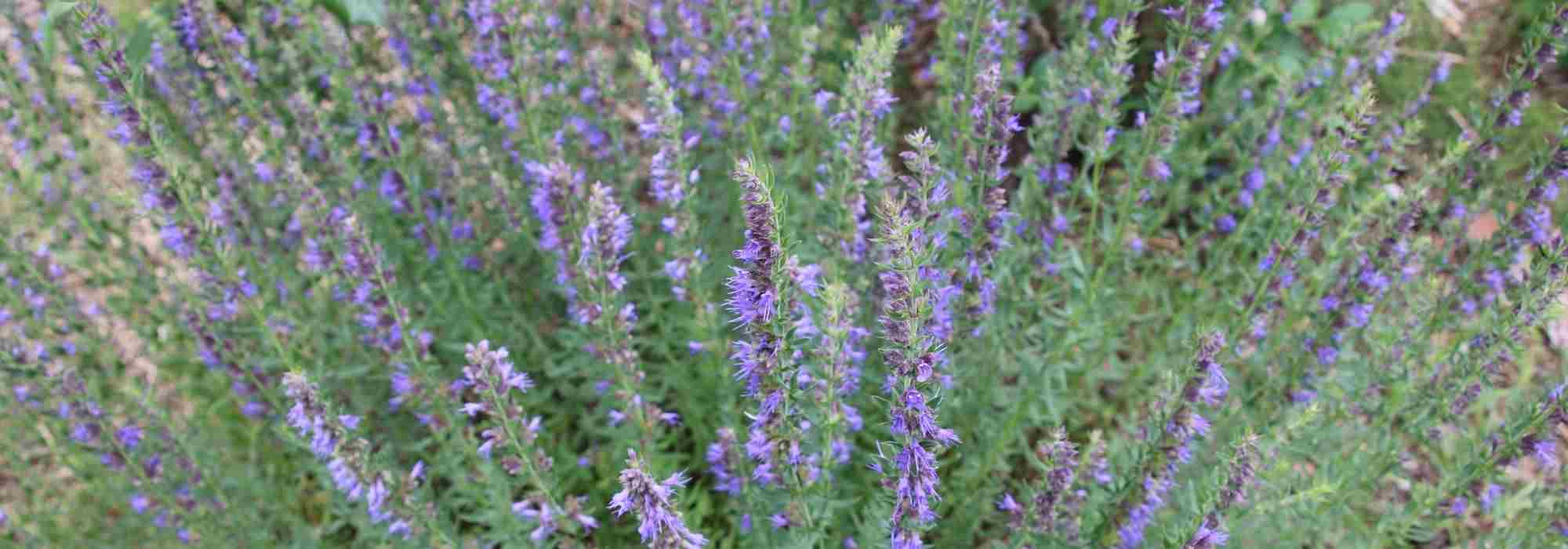
Growing hyssop in pots
All our tips for succeeding in this cultivation
Contents
Aromatic plant with multiple benefits, hyssop, or Hyssopus officinalis in Latin, has been known and used since antiquity; the Hebrews regarded it as a sacred herb. It is a small undershrub from the Mediterranean region with beautiful melliferous flowering, usually blue. Its fragrant leaves – the part used in cooking – are semi-evergreen.
Highly ornamental, hyssop is also a culinary and aromatic plant used for many centuries, renowned for its interesting medicinal properties in cases of bronchial issues. For all these reasons, it can be found in many gardens of various styles.
With its long summer flowering and foliage present for a large part of the year, hyssop is very appealing on a terrace or balcony. Moreover, it tolerates pollution quite well. It also has the advantage of being easily grown in pots. Here’s how to do it. Here are our tips for successfully cultivating it.
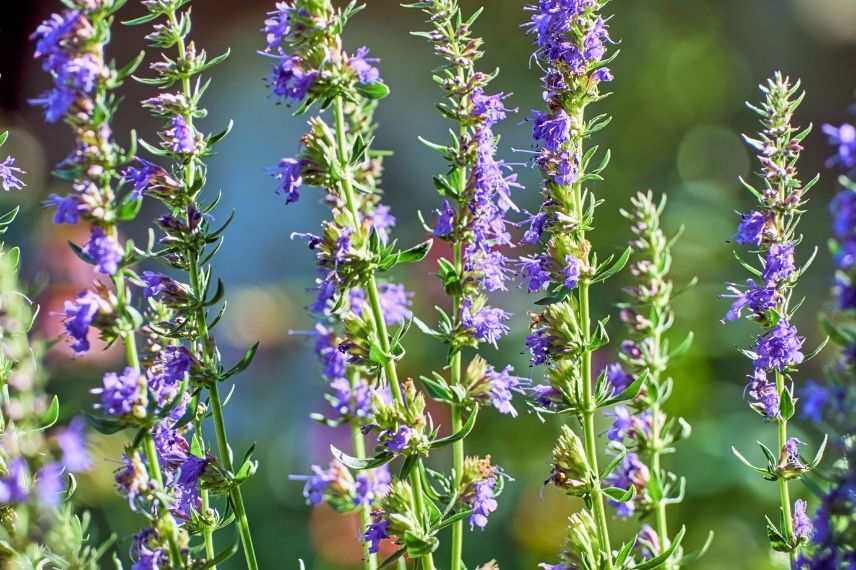
Flowers of Hyssopus officinalis
What type of pot?
The hyssop is a small undershrub that, at ripeness, measures about 60 cm high and 50 cm wide. It is, therefore, easy to grow in a pot. In a container, hyssop can be planted alongside other herbs, for example.
Prefer terracotta pots. Besides their old-world charm, they help regulate temperature and humidity, both in summer and winter, due to their natural porosity. This characteristic is essential for hyssop, which does not tolerate having its roots in water. Thanks to terracotta, any excess moisture evaporates.
Regarding pot size, you have several options:
- You can choose a pot slightly larger than the one in which your young plant was sold. You will then need to repot the plant into a larger pot each year to ensure it has enough space for its root development.
- The second option, the most practical, is to go for a pot that is sufficiently large, at least 30 cm in diameter and the same depth, which will allow the plant to develop with minimal operations on your part. The root system of this undershrub is, indeed, substantial.
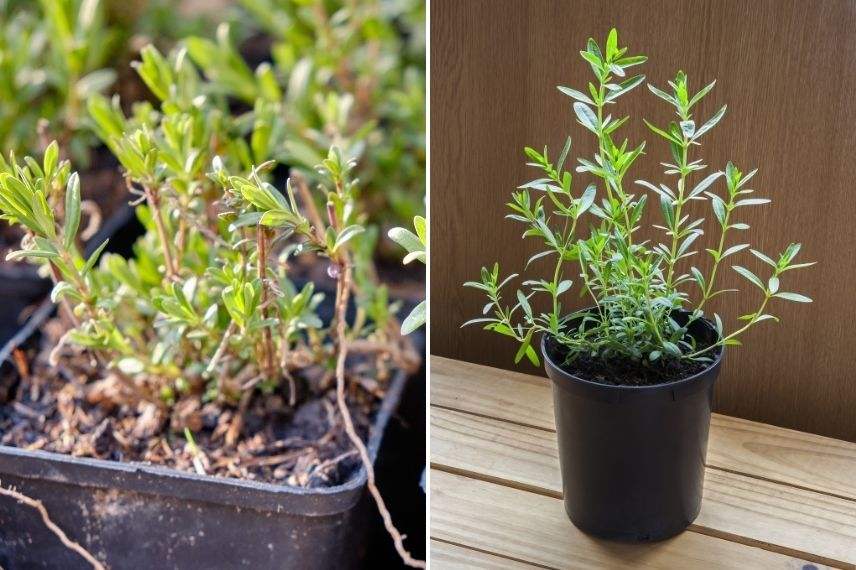
In the market, you will find hyssop in various containers. Here are young plants ready to be planted, packaged in small pots or containers of a few litres.
Read also
How to dry and use hyssop?What substrate?
Hyssop is a plant native to the Mediterranean region, which is also very hardy, provided its roots are kept dry. In the wild, the plant grows in poor, generally stony soils, with a tendency towards limestone.
The substrate must therefore be very draining and light.
- To start, place gravel, clay balls, or pieces of terracotta at the bottom of the pot to ensure good drainage.
- Next, fill with a potting mix specifically suited for Mediterranean plants or, if unavailable, garden soil, to which sand can be added if it is too sticky or heavy. Again, the goal is to improve water drainage.
Hyssop, while it can thrive on little, appreciates humus-bearing soil. This will allow it to develop better. Don’t hesitate to add a handful of well-decomposed compost at the time of planting.
Discover other Hyssopus
View all →Available in 2 sizes
Available in 0 sizes
Available in 1 sizes
Available in 1 sizes
When and how to plant?
When to plant hyssop?
While container plants can, in theory, be planted throughout the year, hyssop is preferably planted in autumn in regions with mild winters (along coastal areas) or in spring, in March/April. Always outside of frost and drought periods.
How to plant hyssop in a pot?
- Fill the pot with gravel and a draining substrate, as mentioned above.
- Dig a hole wider than the root ball.
- Place the root ball in the hole without compacting it. If the roots of your hyssop plant seem to be circling, gently untangle them. This will aid rooting.
- Fill the spaces around the root ball with the draining mix.
- Lightly firm the soil around the base and then water thoroughly.
Finally, mulch the base with gravel, pebbles, or another mineral. As a good Mediterranean plant, it will appreciate this.
Then place your pot preferably in a sunny position. It is a plant from the South, so keep that in mind! However, it can tolerate a semi-shaded location. But it will develop less well there.
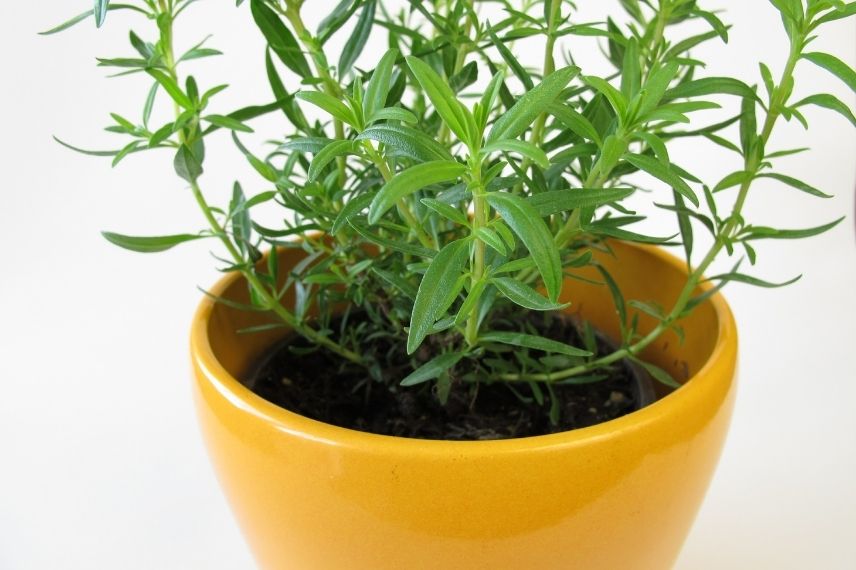
Watering and Fertilising
Watering
If hyssop planted in open ground generally does not require much watering, the situation is somewhat different for pot cultivation. In this case, the plant cannot draw water from deep sources.
That said, except for the weeks following planting and during very hot weather, watering should be extremely sparing. Indeed, hyssop is more sensitive to excess moisture than anything else. If you live in a well-watered area and the pot is large enough to collect rainfall, you may not even need to intervene outside of the summer period, when watering once a week is usually sufficient.
Fertiliser
Hyssop is a low-maintenance plant that requires little. However, it will thrive better if the soil is rich.
It is possible to add a handful of well-decomposed compost once a year, in spring or autumn, to enrich the soil. But this operation is far from essential.
Entretien
As we have just seen, hyssop is truly a very easy-going and undemanding plant that requires very little watering and fertiliser.
Pruning
The only maintenance required is annual pruning. Once a year, to refresh and reshape the clump, cut back the stems with pruning shears at the end of summer, after flowering, to a few centimetres above the old stems to give the plant a rounded habit.
This operation is essential to prevent the plant from exhausting itself too quickly. It is also important to know that hyssop plants do not live long and should be replaced approximately every 4 to 5 years. Fortunately, this plant is quite easy to propagate.
Wintering
In very cold regions, it is also advisable to place the pot containing the plant in a sheltered spot during the bad season. Although hyssop is very hardy and generally withstands the cold well, the roots are more exposed to the cold when the plant is grown in a pot.
Diseases
Finally, hyssop is a plant that is very resistant to diseases. No treatment is necessary. Only rust may affect the plant if there is excessive watering. So, moderation is key!
For further reading
Find all our tips for cultivating hyssop in our file Hyssop, Hyssopus officinale: sowing, planting, cultivation, benefits.
- Subscribe!
- Contents
































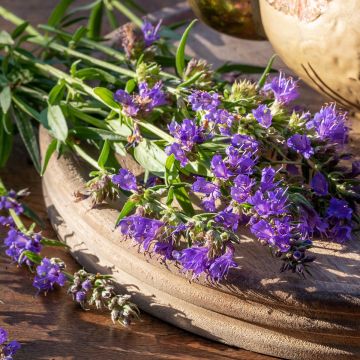

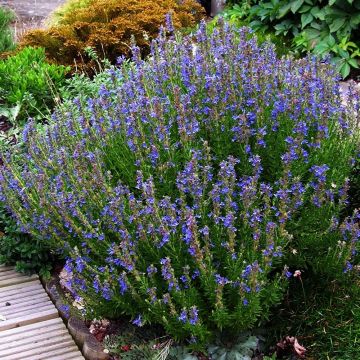

Comments